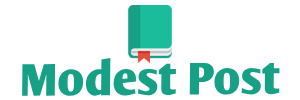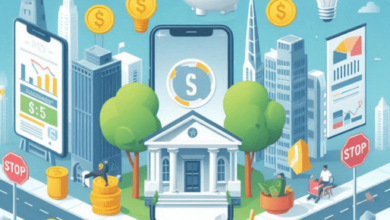Brown Paper Tickets and Hyper-Personalized Itineraries: Empowering Attendees to Shape Their Event Journey

Brown Paper Tickets reviews underscore the growing demand for flexibility and personalization in event experiences. Today’s attendees want more than a one-size-fits-all schedule—they seek curated journeys that reflect their goals, energy levels, and specific interests. Hyper-personalized itineraries deliver this by leveraging AI tools, app-based planning, and tailored content. Platforms like Brown Paper Tickets—a global ticketing service offering seamless tools for event planning and execution—support this shift by simplifying registration and communication from the very beginning, making way for smarter, more customized scheduling that puts the attendee in control.
When attendees can choose the content, sessions and networking opportunities that best align with their preferences, they’re more likely to feel seen, satisfied and inspired to return. Hyper-personalization not only enhances the event experience; it also builds lasting engagement and brand loyalty.
Why Personalization Matters More Than Ever
Today’s attendees bring with them more than just a ticket; they bring expectations. In a world where streaming platforms offer algorithm-based recommendations and online stores tailor every interaction, people are conditioned to expect experiences that reflect their individual preferences.
This desire for personalization extends into the event space. Whether it’s choosing breakout sessions, customizing notification settings or selecting preferred networking formats, attendees are increasingly seeking control over how they engage.
The Role of Technology in Curated Event Journeys
The advancement of AI and mobile-first platforms has significantly enhanced the accessibility of personalized scheduling. Event apps and smart registration tools can now recommend sessions, activities and networking opportunities based on attendee input and real-time behavior.
Interactive platforms can also allow attendees to build their schedules manually with real-time updates on seat availability, overlapping sessions and reminders. These tools offer the flexibility and autonomy attendees appreciate while keeping everything organized and stress-free.
Creating a Personal Connection from the Start
Personalized itineraries begin long before the first session kicks off. It starts with smart registration forms that ask thoughtful questions: What topics interest you most? What’s your networking style? Are you more introverted or extroverted in group settings? Organizers can gather key insights early on and use them to shape the attendee experience, from sending tailored welcome messages to offering pre-event suggestions that feel genuinely helpful.
Flexibility that Matches Energy and Goals
Not every attendee wants to be “on” all the time. By offering flexible scheduling options, organizers can accommodate different energy levels and comfort zones.
Some attendees may want to fill their schedule with back-to-back sessions, while others prefer to attend fewer sessions with more time for reflection or informal networking. Personalized itineraries permit attendees to engage in a way that suits them, resulting in better focus, higher satisfaction and more meaningful takeaways.
This flexibility also allows for spontaneous exploration. If an attendee feels inspired by a morning speaker, they can adjust their afternoon plans to attend a related workshop. Real-time updates through event apps support this dynamic engagement without added stress.
Tailored Networking Opportunities
Networking can be both a highlight and a hurdle, depending on the attendee. Personalized itineraries can include optional meetups, curated matchmaking or small-group sessions based on shared interests or professional goals.
AI-based tools can suggest networking events that align with an attendee’s profile or past behavior, helping to remove the friction of finding the right connections in a sea of strangers.
Offering private lounges, quiet networking options or interest-based roundtables allows attendees to choose environments where they can connect more authentically. These thoughtful alternatives make the networking experience more inclusive, especially for neurodiverse or introverted individuals.
Making It Easy to Navigate and Engage
A well-designed event app is the backbone of any personalized experience. In addition to managing schedules, it should offer live updates, interactive maps, session ratings and push notifications for personalized reminders.
In-app features like “add to my agenda,” “suggested for you,” or “people you may want to meet” enrich the experience by combining control with curated insight. These tools help attendees maximize their time without feeling overwhelmed.
Personalization becomes even more valuable for hybrid or virtual events. Features like custom content hubs, closed captioning preferences, or interface themes allow attendees to tailor the digital environment to suit their needs.
Data-Driven Insights That Improve Experiences
The same technologies that power personalized itineraries also generate rich data that can improve future events. Organizers gain insight into which sessions were most attended, which formats resonated best and how attendees moved through the experience.
Feedback collected in real time can shape next-day agendas or alert organizers to make live adjustments. For instance, if interest in a particular topic surges, a second session can be added on the fly or streamed virtually to a larger audience.
Platforms like Brown Paper Tickets support personalized experiences by offering secure, user-friendly tools for ticketing and registration. Their backend features give organizers access to valuable data on attendance patterns and engagement trends, making it easier to understand how different personalization features are being used. These insights help refine event strategies and support continuous improvement.
Respecting Boundaries While Offering Choice
Personalization isn’t about overwhelming attendees with constant choices; it’s about offering the right amount of agency. Organizers should be mindful not to overload users with too many options or over-collect data that feels intrusive.
Transparency is key. Attendees should know how their information is being used and always have the option to opt in or out of personalization features. A respectful, privacy-conscious approach helps maintain trust while still offering valuable customization.
Clear explanations, simple user interfaces and honest communication ensure that personalization feels helpful, not manipulative.
Building Loyalty Through Personalized Experiences
Events that feel tailored to individual needs leave a lasting impression. When attendees feel understood and empowered to design their journey, they’re more likely to return, recommend and become brand advocates.
Personalization creates a sense of investment not just in the event but in the broader community around it. Attendees who feel valued are more likely to engage meaningfully, offer feedback and stay connected long after the final session ends.
Letting Attendees Take the Lead
Ultimately, hyper-personalized scheduling centers on trust, acknowledging that attendees understand their preferences best, while organizers provide the tools and support to facilitate their ideal experience.
When events are built around choice, flexibility and relevance, attendees don’t just show up. They show up with purpose, curiosity and enthusiasm, ready to engage on their terms.And in today’s world of personalized everything, that’s not just a bonus. It’s what makes an event feel unforgettable.




